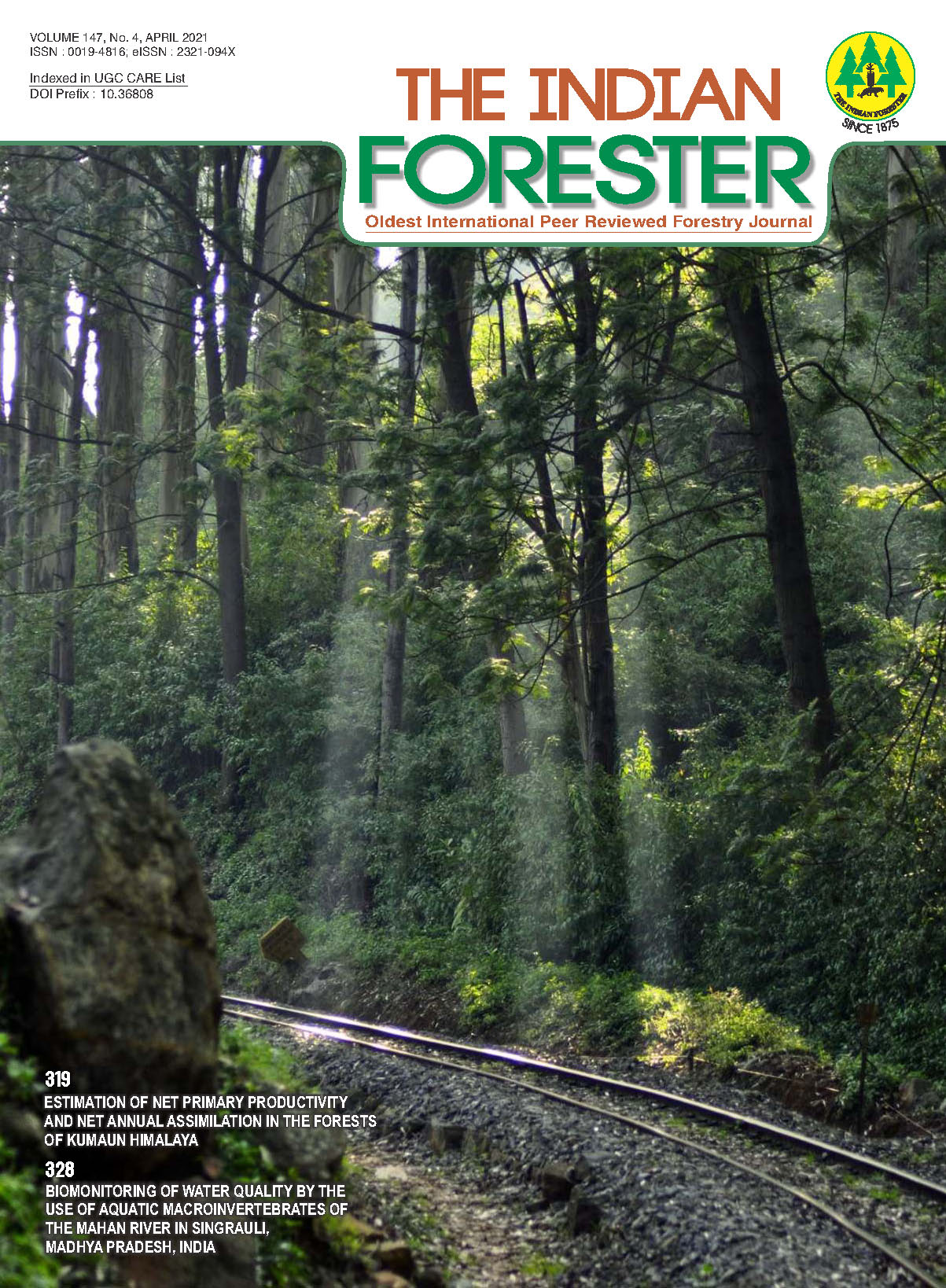Food Provision Indicators of Renuka Forest Division, Himachal Pradesh, Western Himalaya
DOI:
https://doi.org/10.36808/if/2021/v147i4/150263Keywords:
Forest Ecosystem, Food Provision, Renuka Forest Division, Himachal Pradesh.Abstract
Forest Ecosystem contribute to food and shelter to local people in various ways. Trees of forest ecosystem provide variety of foods including fruits, vegetables, nuts, seeds etc. It also supports the provision of fodder for meat and dairy animals. There are complexities in quantifying the relative benefits and costs of forest ecosystem in food provision. These complexities mean that the roles of tree based systems are often not well understood. In the present study, food provision which is extracted from the forest by the local households of Renuka Forest Division and their extraction proportion was studied. The extraction proportion can be used as indicators for further quantification of extracted resources and in various forest conservation practices.References
Anon. (1999). Management plan for Renuka Forest Division: 1999-2000 to 2013-2014. Working plan, Sirmaur, (H.P.)
Census of India. (2011). Population Census 2011. Ministry of Home Affairs, Government of India, New Delhi.
Daily G.C., Matson P.A. and Vitousek P.M. (1997). Ecosystem services supplied by soil. Pages 113-132. In G. Daily, editor. Nature's Services: Societal Dependence on Natural Ecosystems. Island Press, Washington D.C.
de Groot R.S., Alkemade R., Bratt L., Hein L. and Willemen L. (2010). Challenges in integrating the concept of ecosystem services and values in landscape planning, management and decision making. Ecological Complexity, 7(3): 260–272.
Falconer J. and Arnold J.E.M. (1989). Household food security and forestry: an analysis of socio-economic issues. Community Forestry Note 1, FAO.
ICFRE. (2011). Environment impact assessment for Renuka dam project in Sirmaur district of Himachal Pradesh, Submitted to Himachal Pradesh power corporation ltd. Http://hppcb.gov.in/Publications/Renuka_EIA.pdf.
Lynch O.J. (1992). Securing community-based tenurial rights in the tropical forests of Asia. Issues in development, Report WRI, Washington.
Millennium Ecosystem Assessment (2005). Ecosystems and human well-being: findings of the scenarios working groups. Washington (DC): Island Press.
Pandey R. (2009). Forest resource utilization by tribal community of jaunsar, Uttrakhand, Indian Forester, 135(5): 655-662.
TEEB. (2008). The economics of ecosystems and biodiversity (TEEB), an interim report. Brussels: European Commission. www.teebweb.org/ LinkClick.aspx? fileticket=u2fMSQoWJf0% 3d&tabid (accessed 10 March 2012).
TEEB. (2009). TEEB for policy makers - Summary: responding to the value of nature. Bonn: TEEB.www.teebweb.org/Portals/ 25/ Documents/ TEEB%20for%20National%20Policy%20Makers/TEEB%20for%20Policy%20exec%20English.pdf (accessed 10 March 2012).
TEEB. (2010). The economics of ecosystems and biodiversity: Ecological and economic foundations. London (UK): Earthscan UK National Ecosystem Assessment (2010) Progress and steps towards delivery. Cambridge: UNEP-WCMC.
Tewari D.N. (1989). Dependence of tribals on forest, Gujarat Vidyapith, Ahmedabad.
Warner K. (2000). Forestry and sustainable livelihoods: What part can forests and forestry play in reducing poverty? Unasylva, 202: 3-12.
Downloads
Downloads
Published
How to Cite
Issue
Section
License
Unless otherwise stated, copyright or similar rights in all materials presented on the site, including graphical images, are owned by Indian Forester.





